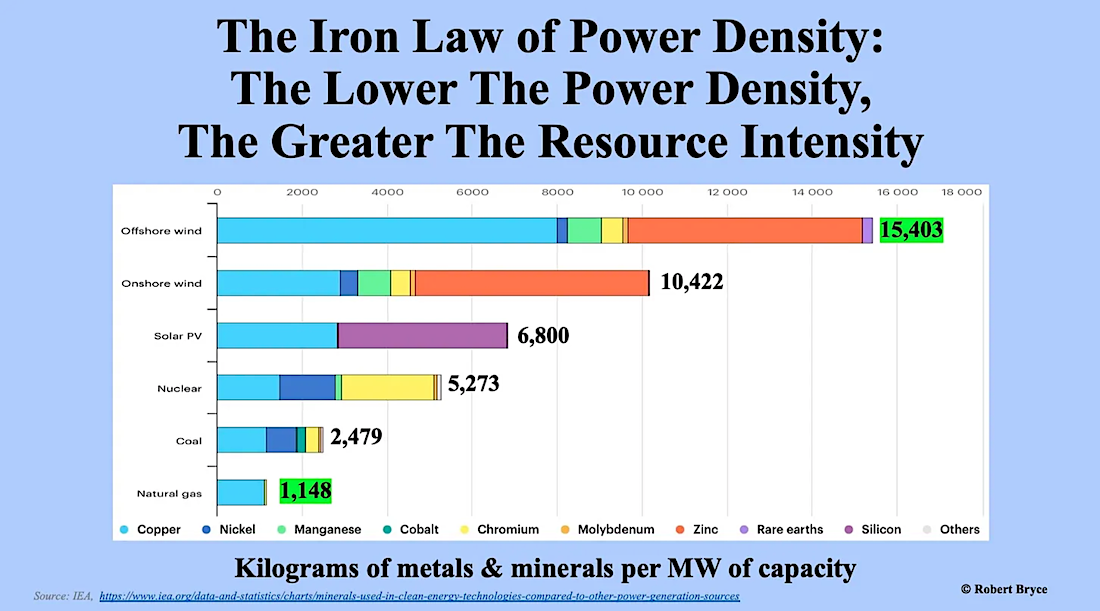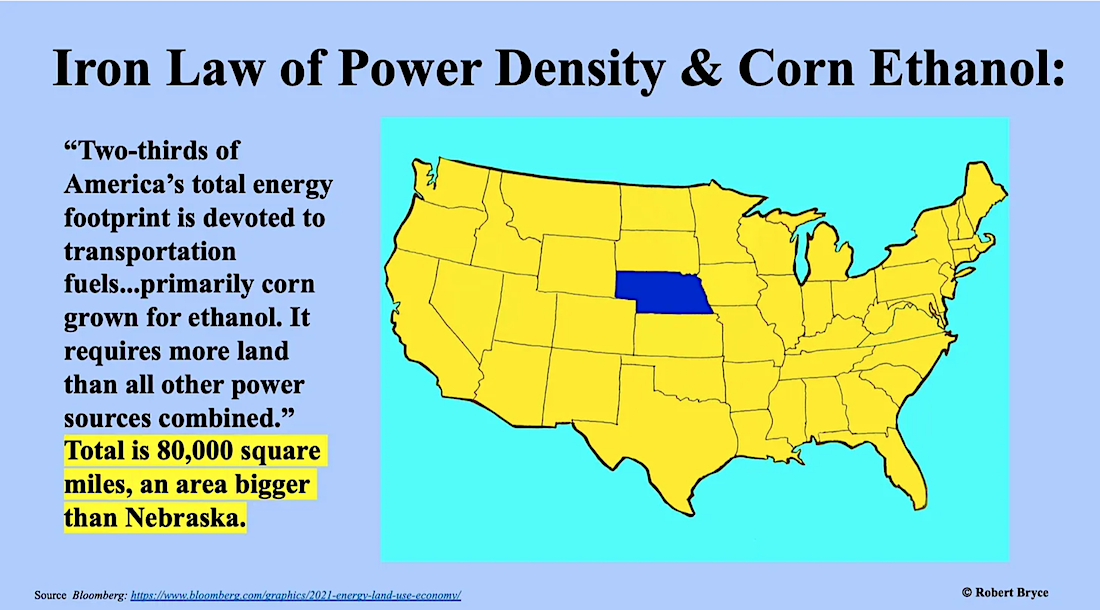That would be energy expert Robert Bryce. At Substack, he demolishes the Left’s latest “green” fantasies, beginning with the same Paul Krugman column that Steve noted here.
None of the claims in Krugman’s August 7 column are new. For years, academics from elite universities, climate activists, leaders of the anti-industry industry, and legacy media outlets (and the New York Times in particular) have been peddling shopworn claims about “all-gain-no-pain” renewables.
You’ve no doubt heard them: renewables are cheap and getting cheaper, wind and solar energy are the future, and the main reason that conservatives and knuckle-dragging rural landowners are opposing massive renewable projects all across America is that they don’t understand “science.”
That is, the “science” that produces energy nowhere near half the time at three times the cost.
That’s the spin. Here’s the reality: the conspiracy against wind and solar is one of basic math and simple physics. It’s not conservatives who are wrong on “science,” it’s liberals like Krugman and his myriad allies in the climate claque who refuse to recognize (or even discuss) the physical limits on our energy and power networks.
Wind and solar are remarkably inefficient, which means that they require enormous amounts of raw materials. Using wind and solar to supply the world’s energy needs is not possible, but even attempting it would require the biggest mining, manufacturing, transportation and construction project since the Industrial Revolution.
This chart shows the raw materials required by wind and solar compared with other energy sources:

Let me know when liberals are prepared to green light the enormous amount of mining needed to produce those minerals. These days, we can’t even build a dam.
But along with mineral resources, the land needed for wind and solar installations is an important constraint:
Proving why low-power-density sources are the wrong choice for modern society takes only a modicum of effort.

Let’s start by looking at corn ethanol and other biofuels, which have a power density of about 0.1 watt per square meter. Counteracting that paltry power density requires lots of other resources, including fertilizer, diesel fuel, water, and staggering amounts of land. In 2021, Dave Merrill, a reporter and data analyst at Bloomberg, reported that “Two-thirds of America’s total energy footprint is devoted to transportation fuels produced from agricultural crops, primarily corn grown for ethanol. It requires more land than all other power sources combined.” Merrill determined that biofuels require the cultivation of about 80,000 square miles of cropland. As can be seen in the graphic above, that’s an area bigger than the state of Nebraska.
Hey, who said we have a sane energy policy?
This chart shows the amount of energy you can generate per square meter, using various technologies. “Green” energy is pathetic:

If you wondered, the Rolls-Royce SMR figure is the expected power density of the reactor now under development by Rolls-Royce.
“Green” energy companies are losing money hand over fist, as material costs skyrocket and politically-greased projects are canceled or put on hold due to wholly justified public opposition:
If your power plant requires 10 times more material inputs than other forms of power generation, it’s readily apparent why Siemens and other companies in the wind business are getting blown away. Last year, GE’s renewable business lost $2.2 billion. That loss was blamed on “inflation and supply chain pressures.” The company has cut its onshore wind turbine workforce by 20% and according to Reuters, the last time GE’s renewable business made a profit was in 2020.
Since Bruch’s TV appearance, the problems at Siemens Energy have worsened. Last week, the German company announced it lost $2.4 billion on its wind business in the latest quarter and it expects to lose $4.9 billion in 2023 due to costly fixes it will have to make to wind turbines it has sold. What happened? In the ongoing effort to wring more electricity from the diffused energy in wind, Siemens has made bigger and bigger machines with longer and longer blades. In doing so, they made the turbines more fragile and thus more likely to break. On August 7, the same day Krugman’s column was published in the Times, Reuters reported that in addition to the multi-billion-dollar loss the company:
…also cut its sales outlook, and issued a new, lower profit outlook after withdrawing it in the wake of the disclosed issues, which include wrinkles in rotor blades and faulty gears at its newer onshore turbines.
The offshore wind energy industry is faring even worse:
As Howard Rhodes of EnergyPortal.eu explained earlier this month, the offshore sector is facing “a financial crisis as costs continue to rise. Inflation in components and labor costs, along with rising interest rates, has led to a 57% increase in the costs associated with U.S. offshore wind projects since 2021.” Soaring commodity prices have also increased the cost of making onshore wind turbines. By one estimate, the cost of building a wind turbine has surged by 38% over the past two years.
There is much more at the link. The bottom line is that wind and solar energy are a train wreck. Unfortunately, under current government policy, you and I are passengers on the train.
Notice: All comments are subject to moderation. Our comments are intended to be a forum for civil discourse bearing on the subject under discussion. Commenters who stray beyond the bounds of civility or employ what we deem gratuitous vulgarity in a comment — including, but not limited to, “s***,” “f***,” “a*******,” or one of their many variants — will be banned without further notice in the sole discretion of the site moderator.